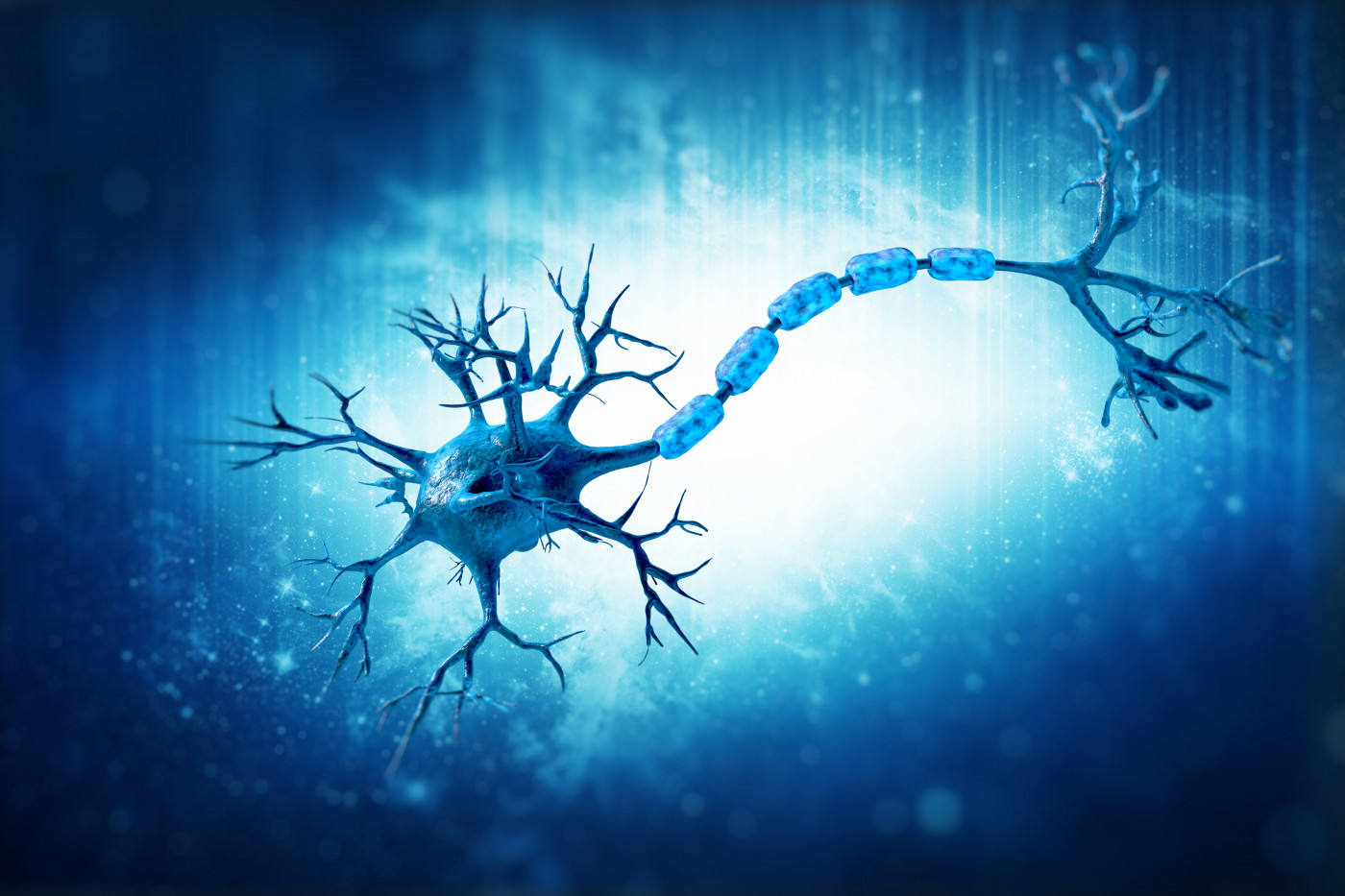#MSVirtual2020 – Remyelination Mainly Conducted by Pre-existing Myelin-producing Cells, Study Finds

Remyelination — or the restoration of lost myelin, the protective sheath surrounding nerve cell fibers — in multiple sclerosis (MS) depends mainly on pre-existing oligodendrocytes (myelin-producing cells), rather than on newly-generated oligodendrocytes, according to a recent study.
The data also showed that perineuronal, or satellite, oligodendrocytes — mainly found around the central body of nerve cells and generally considered to be involved in processes other than myelin production — also contribute to remyelination in MS patients.
These findings may help to develop new therapeutic approaches to increase myelin production in MS.
The study, “Remyelinating satellite oligodendrocytes provide a rescue strategy to protect neurons after cortical demyelination in multiple sclerosis,” was presented at MSVirtual2020 by Franziska van der Meer, PhD, of the Institute for Neuropathology of the University Medical Center of Göttingen, in Germany.
This was the 8th joint meeting, held Sept. 11–13, of the Americas Committee for Treatment and Research in Multiple Sclerosis and European Committee for Treatment and Research in Multiple Sclerosis.
MS is characterized by demyelination, or the loss of myelin — a protective sheath around nerve cell fibers that is key for proper neuronal communication. Remyelination is a goal of MS research.
Oligodendrocytes are the cells responsible for myelin production and coating nerve fibers in the central nervous system (the brain and spinal cord). These cells derive from more immature, stem-like cells called oligodendrocyte precursor cells (OPCs).
The presence of a molecule called BCAS1 in these cells is characteristic of a unique stage of maturation between OPCs and mature, myelin-maintaining oligodendrocytes.
Satellite oligodendrocytes are mainly considered to be non-myelinating cells (meaning their primary function is not related to myelin production), but increasing evidence suggests that they may acquire myelinating functions in the presence of MS-related demyelination.
Whether remyelinating oligodendrocytes in MS arise from newly formed OPCs or from pre-existing OPCs generated during development remains unclear, as well as the contribution of satellite oligodendrocytes to remyelination.
Van Der Meer and her colleagues set out to investigate the origin of remyelinating oligodendrocytes in MS by analyzing different subsets and maturation states of oligodendrocytes in brain lesions of people with early MS and those with late progressive disease, as well as in mouse and rat models of MS.
Results from both MS patients and animal models showed that few new oligodendrocytes, including OPCs, are formed after demyelination in both white and grey matter. Of note, brain’s white matter mainly consists of nerve fibers and is typically affected by MS, while grey matter is mainly made of nerve cells’ central body.
In addition, the team found that “only very few newly formed oligodendrocytes are involved in remyelination,” said van der Meer.
Notably, the team also discovered that a fraction of BCAS1-positive oligodendrocytes in the cerebral cortex (the outermost layer of grey matter in the brain) were satellite oligodendrocytes.
While their total number remained unchanged after demyelination in early MS patients and animal models, satellite cells acquired a myelinating shape and started to produce MAG, a protein involved in myelination, “showing that these cells actively participated in remyelination,” van der Meer said.
Further analyses in brain areas with established remyelination from progressive MS patients and animal models showed that the total number of oligodendrocytes remained unchanged.
However, there was a significant drop in BCAS1-positive oligodendrocytes and a significant increase in mature cells, suggesting that myelin-producing oligodendrocytes, including satellite cells, matured to myelin-maintaining oligodendrocytes.
Van Der Meer noted that these findings highlighted, for the first time, that BCAS1-positive satellite oligodendrocytes in the cerebral cortex serve as a pool to generate remyelinating cells, obtaining a myelinating shape early after demyelination, and start to restore areas of myelin loss.
“Predominantly pre-existing oligodendrocytes including perineuronal satellite oligodendrocytes generate the new myelin after experimental demyelination and in lesions of patients with early MS,” she concluded.






